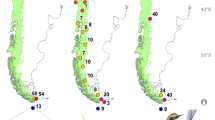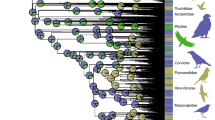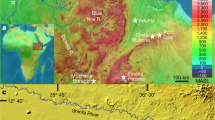Abstract
IN a recent letter in NATURE (vol. xlviii. p. 27), under the above heading, Mr. Wallace has done me the honour to make some observations on the conclusions I have arrived at on other discoveries I have made in the Chatham Islands, and on the evidence adduced in my paper read before the Royal Geographical Society on March 12 last, i.e., that an Antarctic continent—which I may name Antipodea—is necessary to explain the distribution of life in the southern hemisphere. Mr. Wallace says, “It is this tremendous hypothesis which appears to me to be not only quite unnecessary to explain the facts, but also to be inadequate to explain them. If one thing more than another is clear, it is that these comparatively small flightless birds were developed, as such, in or near to the islands where they are now found, since they could not possibly have arisen on any extensive land inhabited by carnivorous mammals and reptiles, and, if introduced into such a country could not long survive." If by this Mr. Wallace means that only the flightlessness of these birds, apart from their general structure as members of the genus Aphanapteryx, arose in or near the islands where they now are, he still leaves the, to me, greater difficulty unexplained how two so closely related species of the same genus should have arisen in regions separated by nearly one half of the circumference of the globe. For it has to be remembered that Aphanapteryx belongs to the Ocydromine group of the Rails, which is quite unknown in the northern hemisphere, and, therefore, to have reached “Lemuria” (the ancient land of which Madagascar, Mauritius, Bourbon, Rodriguez, and the Seychelles, are the fragments) the genus must have arisen independently in both regions where its species are now found, or it spread from one or the other centre, or from some common land by flight. Mr. Wallace has himself pointed out that to explain the presence of the flightless Notornis and Ocydromus in two groups of islands in the New Zealand region requires a land connection, for it has been hitherto considered an axiom of geographical distribution that the regions inhabited by the same genus or species have been continuous, or have been, at all events, such as to afford possibilities of migration from one to another. If Aphanapteryx could have spread from the Chatham Islands to Mauritius by flight, surely Notornis and Ocydromus did not require a land connection to reach from New Zealand to the nearer outlying islands, for they may equally have lost the use of their wings only after they reached their present homes.
This is a preview of subscription content, access via your institution
Access options
Subscribe to this journal
Receive 51 print issues and online access
$199.00 per year
only $3.90 per issue
Buy this article
- Purchase on Springer Link
- Instant access to full article PDF
Prices may be subject to local taxes which are calculated during checkout
Similar content being viewed by others
Author information
Authors and Affiliations
Rights and permissions
About this article
Cite this article
FORBES, H. Mr. H. O. Forbes's Discoveries in the Chatham Islands. Nature 48, 74–75 (1893). https://doi.org/10.1038/048074c0
Issue Date:
DOI: https://doi.org/10.1038/048074c0
Comments
By submitting a comment you agree to abide by our Terms and Community Guidelines. If you find something abusive or that does not comply with our terms or guidelines please flag it as inappropriate.



